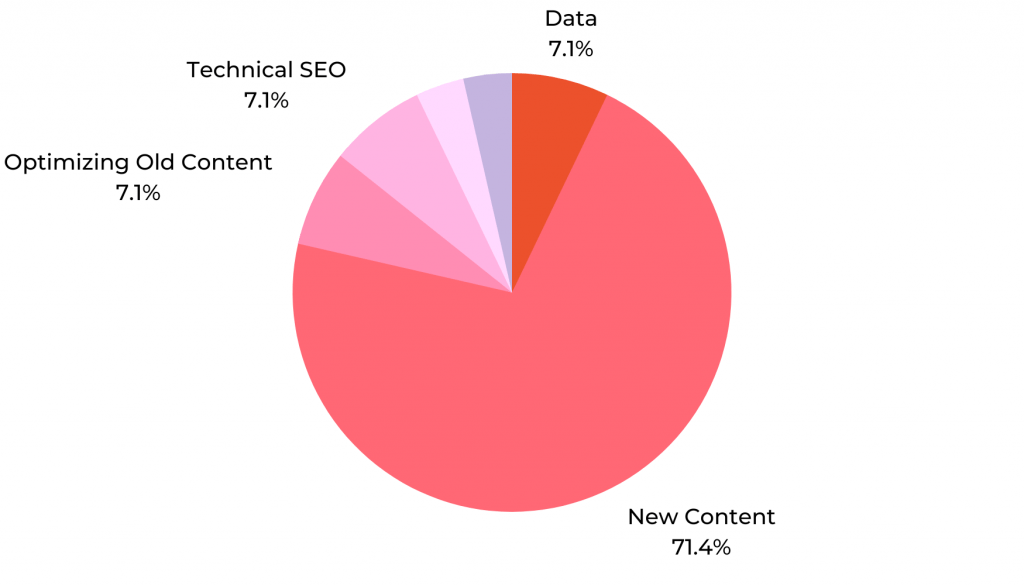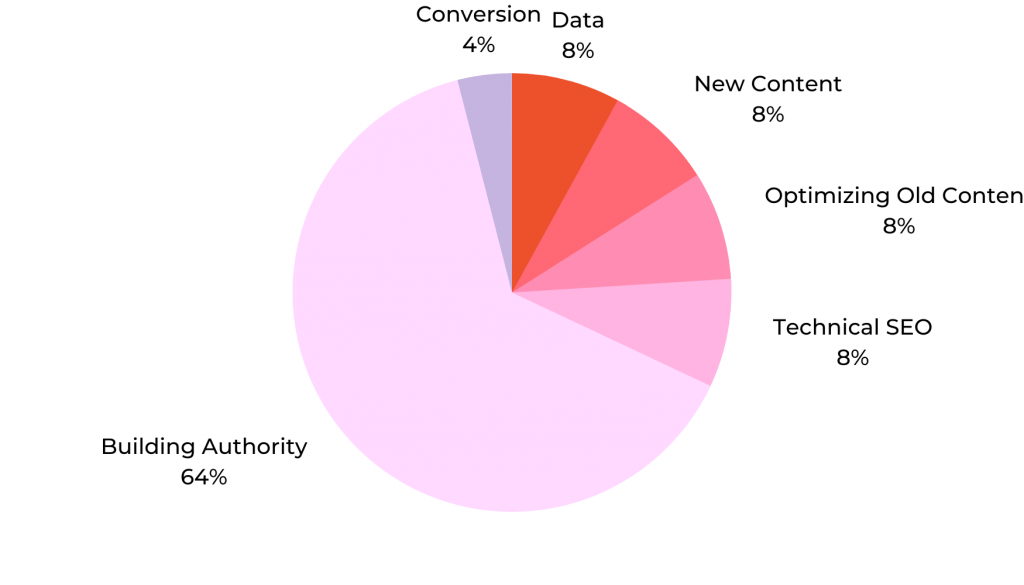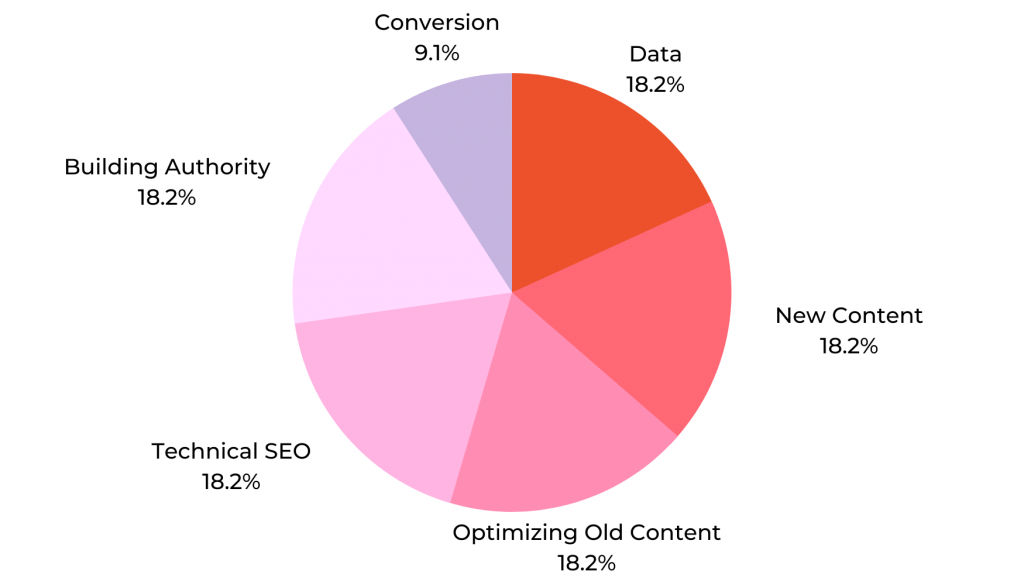Introduction to SEO Balancing
So what do you need to balance when doing SEO? Achieving success in SEO requires continuously balancing many interconnected elements. This goes far beyond basic keyword targeting.
Modern search algorithms consider hundreds of ranking signals spanning technical factors, content quality, user experience, and overall value. An imbalance in any area risks declines.
Maintaining equilibrium across on and off-page optimization, user engagement, and long-term growth is integral for sustainable dominance. SEO balance enables thriving through ongoing search evolutions.
Why SEO is Not a One-Size-Fits-All Solution
Given the complexity of search algorithms, there is no universal SEO blueprint guaranteeing top rankings. The ideal balance depends on your business, niche, resources, and objectives.
For example, an established informational site may focus more heavily on content depth while a young ecommerce brand prioritizes technical infrastructure. Competitive differences also impact strategy.
Established Informational Site:

Young Ecommerce Brand

An Established Local Business might look something like this:

This guide will explore frameworks for balancing SEO investments efficiently for your unique needs. But mastering SEO requires testing and adapting to find the right equilibrium for long-term scalability.
Understanding SEO Fundamentals
There are two core aspects of SEO:
On-Page SEO - Optimizing individual webpages through titles, content, URL structure, etc.
Off-Page SEO - Earning external signals like backlinks, citations, and social shares to increase authority.
On-page factors help search engines comprehend what specific pages are about. Off-page signals build domain-wide authority and trust. Balance between optimizing inward and outward is ideal.
Building a Solid SEO Foundation: What Matters Most?
While advanced tactics exist, foundational on-page SEO remains crucial:
- Mobile-friendly design - Over half of search is mobile. Slow mobile pages get penalized.
- Site speed - Faster sites rank better. Optimizing images and code improves speed.
- Titles - Accurately summarize topics with target keywords included naturally.
- Headings and content - Heading tags outline content hierarchy. Content answers searcher needs.
- URL structure - Use keywords in slugs. Avoid overly long paths.
Once core technical SEO and content quality fundamentals are met, focus expands to off-page authority building through backlinks, social signals, and local listings.
Crafting Your SEO Strategy
Keyword Strategy: Finding the Sweet Spot Between Relevance and Competition
Keywords remain vital for SEO by mapping content to searches. Effective keyword targeting balances:
- Relevance - Matching keywords exactly to your products, content, and audience needs.
- Search volume - Prioritizing keywords with sufficient search demand to be worthwhile.
- Competition - Focusing on reachable longer tail phrases over ultra-competitive terms.
- Intent - Optimizing for keywords aligned with user goals, such as informational over transactional terms for an early-stage site.
Content Quality: Balancing Information with Optimization
Creating content solely to target keywords results in thin, low-value pages. But ignoring keywords also misses SEO potential.
Find equilibrium between:
- Informative, original content - Well-researched articles, guides, and tools offering true value.
- Optimization best practices - Seamlessly integrating keywords through titles, headers, meta descriptions, alt text, schema markup, etc.
- Formatting - Using bullet points, bolding, images, and videos to increase scannability and engagement.
The ultimate goal is providing immense informational value that also adheres to SEO best practices - without overt keyword stuffing.
Technical SEO Considerations
A website built on a solid technical foundation enables search engines to easily crawl, index, and understand content. Core technical SEO elements include:
- Indexation - Ensuring all pages are crawlable with no blocking restrictions. Site maps facilitate discovery.
- Quality code - Clean HTML/CSS following best practices with proper use of tags and metadata.
- Optimized hosting - Fast, secure web hosting with ample resources to support traffic spikes.
- Structured data - Schema markup that adds semantic context for search engines.
- Page speed - Lightweight image and script loading, compressed files, and efficient caching.
Ensuring a Seamless User Experience Across Devices
With mobile representing over half of all searches, delivering a seamless experience across devices is mandatory:
- Responsive design - Websites automatically adapt layout based on screen size.
- Interlinking - Deep link internal pages from the website for discoverability.
- Mobile usability - Ensure taps are easy, page layouts logical, load times fast. Test on actual devices.
Technical optimizations that make interacting with your site frictionless are foundational for conversions and satisfaction.
SEO and User Experience
Many On-Page SEO best practices directly enhance user experience, improving satisfaction, time on site, and conversions:
- Compelling titles and meta descriptions - Entice visitors with clear summaries of what the page offers.
- Quality content - Extensive, well-researched articles hold visitor attention and answer their query.
- Logical information architecture - Related content linked and categorized cohesively so visitors easily find what they need.
- Page speed optimizations - Faster load times improve experience dramatically.
User-Centric SEO: Aligning with Audience Needs
Understanding exactly what your target audience seeks and tailoring the experience accordingly is invaluable:
- Personas - Create detailed buyer personas to map their motivations and goals.
- Customer surveys - Ask customers directly what site enhancements would help them most.
- Search analysis - Leverage Google's People Also Ask section to see related queries. Produce content addressing user questions.
- Behavior tracking - Analyze on-site analytics for drop-off points, engagement metrics, and conversion funnels.
Optimizing purely for algorithms rather than audience satisfaction results in a hollow, inauthentic user experience.
Advanced SEO Techniques
Once core technical and on-page optimization is in place, there are several advanced tactics to further enhance organic visibility:
- Link building - Earning backlinks from relevant sites signals trust and authority to search engines. Prioritize long-term relationship building.
- Local SEO - Optimizing Google My Business listing and citations across key directories improves local pack rankings.
- Site speed optimization - Leverage above-the-fold rendering, HTTP/2, and content delivery networks to maximize performance.
- Voice search optimization - Optimize for featured snippets and voice results with conversational content and structured data.
Pillar Pages and Topic Clusters: Structuring Content for Depth and Reach
Strategically organizing information architecture using pillars and clusters balances search breadth and depth:
- Pillar pages - Authoritative pages targeting primary keywords, linking out to related content.
- Topic clusters - Groups of pages centered around subtopics, all linking back to the main pillar page.
This hub-and-spoke model allows focusing optimization efforts for maximum ROI through centralized ranking pages connected to expanding topics.
SEO in the Broader Marketing Context
Rather than taking a siloed approach, SEO works best when integrated with other digital marketing channels in a cohesive strategy:
- Social amplification - Promoting new content across social platforms helps earn backlinks and visibility.
- Paid campaign coordination - Use ads to boost visibility of recent high-priority content using targeted keywords.
- Retargeting - Remarket SEO content to previous visitors; combine with ads for amplification.
- Cross-channel messaging - Maintain consistent branding, offers, and messaging across channels.
Balancing Short-Term Gains with Long-Term SEO Objectives
Tactics focused solely on immediate results often backfire long-term. Maintain balance by:
- Investing in evergreen, comprehensive content rather than trendy articles.
- Building diverse organic traffic channels rather than relying on a single ranking keyword.
- Focusing on trust indicators like time on site rather than quick exits.
- Monitoring metrics tied to long-term positioning like backlinks earned versus short-term conversions.
Sustainable SEO requires playing the long game patiently with diversity and depth, not chasing quick wins.
Adapting to Search Engine Evolutions
Search algorithms evolve constantly. Stay ahead of the curve by:
- Monitoring algorithm update trackers for Google like Mozcast to detect changes.
- Analyzing your site's performance around update rollouts to identify impacts.
- Proactively optimizing for anticipated updates, like page experience scoring.
- Diversifying off-page signals across social shares, local citations, brand mentions, etc. to minimize dependency on any one factor.
Diversifying for Stability: SEO Across Multiple Search Platforms
Google commands the majority of search, but optimizing for Bing, YouTube, Amazon, and other verticals expands reach:
- Identify secondary search engines popular for your niche and optimize accordingly.
- Align video SEO best practices for YouTube.
- Optimize product content for Amazon rankings through A+ content, reviews, availability, etc.
A presence across multiple search platforms insulates from algorithmic changes and expands visibility.
Competitive Analysis in SEO
Learning from the Competition: SEO Benchmarking and Strategy
Analyze competitors to identify optimization opportunities:
- Compare your rankings in search results to see where you lag top competitors.
- Leverage rank tracking tools to see competitors' full keyword profiles.
- Review their content strategies across pillars, blogs, videos, and social.
- Check their website performance benchmarks like page speed and technical errors.
- Examine their backlink profile quality and quantity relative to yours.
Outranking Competitors with Smart SEO Investments
Use competitive intelligence to guide your strategy and outmaneuver rivals:
- Prioritize high-potential keywords competitors rank for but you don't yet.
- Improve site speed and user experience using top competitors as performance benchmarks.
- Produce more in-depth content on shared topics.
- Reach out to sites linking competitors for opportunities to earn backlinks.
Regular analysis ensures you learn from competitors while continuously closing SEO gaps to ultimately surpass them.
Conclusion: The Continuous Journey of SEO
Approached strategically, SEO can serve as a continually-compounding growth engine for your business over the long-term:
- Authoritative content attracts links, social shares, and brand mentions - multiplying your authority.
- Higher rankings drive more qualified traffic to your site, increasing conversions and revenue.
- Revenue funds larger content production and link building investments to further elevate SEO.
As search algorithms and digital marketing evolve rapidly, so must your optimization efforts. Some final thoughts:
- Continue expanding your SEO knowledge through courses, conferences, and industry news.
- Test new tactics incrementally to learn how they impact your SEO and metrics.
- Use tools like Google Search Console to identify opportunities as they emerge.
- Revisit your competitive analysis periodically to realign with market leaders.
- Maintain balance across SEO investments for stability as you scale.
The most effective SEO strategies are those continuously enhanced through testing, learning, and refining. Use this guide as the starting blueprint for your journey to search dominance. As always if you need indepth reviews for seo tools, serpfocus is your #1 resource.


